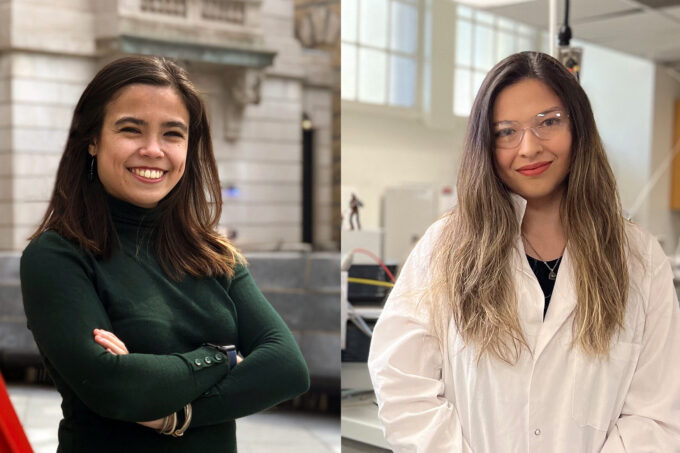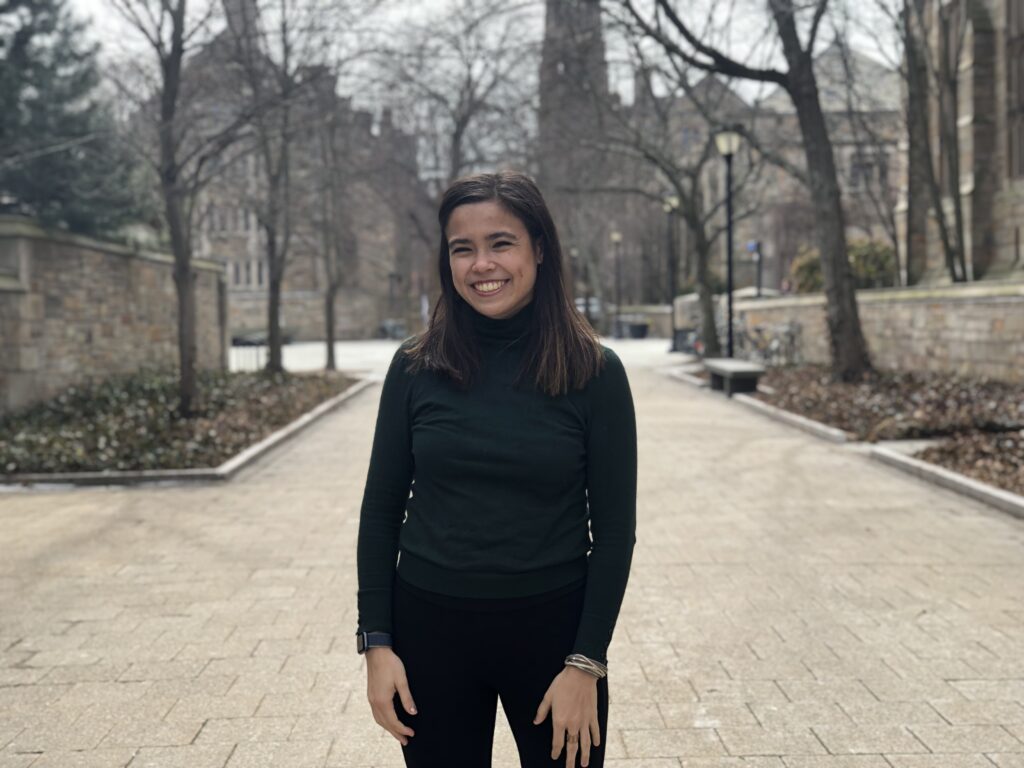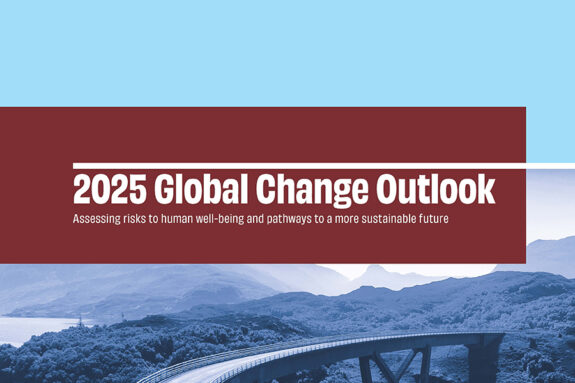MIT welcomes two Heising-Simons Foundation 51 Pegasi b Fellows for 2022

MIT is pleased to welcome two of the 2022 51 Pegasi b Fellows, Malena Rice on the left and Eva Scheller on the right. Images courtesy the Heising-Simon Foundation
MIT’s School of Science is pleased to welcome postdoctoral scientists Malena Rice and Eva Scheller, recipients of the 2022 51 Pegasi b Fellowship. The announcement was made today by the Heising-Simons Foundation.
The 51 Pegasi b Fellowship, named after the first exoplanet discovered orbiting a sun-like star, was established in 2017 to provide postdoctoral scientist with the opportunity to conduct theoretical, observational, and experimental research in planetary astronomy.

Scheller will be hosted by the Department of Earth, Atmospheric and Planetary Sciences (EAPS), working with Professors Tanja Bosak and Ben Weiss. Scheller will continue her previous work to address enduring questions around water on Mars to place its history in context with other rocky planets.
“There are still so many intriguing, unsolved questions about Mars,” says Scheller. “Even though Earth and Mars started out the same, a key difference occurred in the geological processes that caused Mars to be more inhospitable to life. That’s the puzzle I want to pursue during my fellowship.”
She will first conduct a laboratory experiment to investigate the chemical reactions between water and basalt, the most common rock found on the Red Planet. Findings will explore the possibility that old liquid water environments affected the planet’s climate and habitability potential. Next, Scheller will perform remote fieldwork using the Perseverance rover to ascertain if water was once sequestered in a key region of Mars’ crust. She will then combine results to model life-sustaining conditions on terrestrial planets with the aim to support future observations in the solar system and beyond, saying “I am eager to see how upcoming missions to Venus, data from the James Webb Space Telescope and the Perseverance rover on Mars facilitate an interplanetary comparison of processes that enable or disable habitability.”
Scheller received her PhD in Geological and Planetary Sciences from the California Institute of Technology in February 2022. It was during an exchange program at Caltech that Scheller was inspired to probe the enigmatic past of water in Mars. Bridging the worlds of laboratory experimentation, remote data science, and theory, Scheller examined the history of geological processes on terrestrial planets to decipher markers of habitability.
In a breakthrough moment, she confirmed that most of Mars’ water was locked within its crust, overturning the predominant theory that it had escaped through the atmosphere. Scheller later made key findings related to ancient water environments and organic compounds with the Perseverance rover. She also led a collaboration to synthesize the findings from an extended Perseverance rover mission to acquire samples from a sequence of ancient Martian rocks she characterized and defined.
“Hiking and collecting rocks as a child made me realize that each one has a huge story to tell about where we come from and where our planet is going,” she says.

Rice will be hosted by the Kavli Institute for Astrophysics and Space research, working with Senior Research Scientist George Ricker. Her research uses machine learning methods and cutting-edge computational techniques to enable groundbreaking detections of outer solar system bodies—including Planet Nine and interstellar objects (ISOs) that whiz through the solar system. She will also compare the shapes and sizes of distant objects to the pancake-like ISOs detected to date, revealing more about the kinds of bodies that commonly inhabit the outskirts of planetary systems.
“Our solar system is the bedrock for understanding how planetary systems work on a broad scale,” she says. “It’s important to consider both our own solar system and extrasolar systems when constructing a larger framework for our theoretical understanding of how planetary systems form and evolve.”
Rice recently received her PhD in astronomy from Yale University. Throughout a career that has traversed Spain, Iceland, and the Great Barrier Reef, Rice has focused her sights on the faraway, unexplored corners of our solar system. She applies theory, observation, and computational techniques in her investigations of the outer solar system and its vast potential for astronomical discovery—including Planet Nine, an icy world thought to be hiding beyond Neptune.
“Finding another planet in our solar system would be wonderful—and change all of our textbooks! Even if Planet Nine isn’t there, we get to pursue different avenues that are equally exciting,” she says.
While searching for Planet Nine in her current research, Rice leverages a novel method to pinpoint its potential pathway across the sky by layering thousands of images captured by the Transiting Exoplanet Survey Satellite (TESS), a space telescope originally designed to hunt for exoplanets. Her contributions have brought the field closer to confirming the existence of unseen distant planets and smaller objects—building blocks that could hold the secrets to planetary system beginnings.
“It’s incredible that we can study the Big Bang in great detail, yet the outer solar system is still a mysterious frontier. The distant objects that reside there can reveal a tremendous amount about the beginnings and growth of our solar system,” she says.
The other postdoctoral scientists and their host institutions this year are Paul Dalba at the University of California, Santa Cruz; Leonardo Krapp and Brittany Miles at the University of Arizona; Shreyas Vissapragada at Harvard University; J.J. Zanazzi at the University of California, Berkley; and Michael Zhang at the University of Chicago.
Created by the Heising-Simon Foundation, the 51 Pegasi b Fellowship provides eight fellows with up to $385,000 over three years for independent research to improve our understanding of planetary system formation and evolution, along with technology to help detect other worlds. The Fellowship also establishes mentorships for fellows with established faculty at their host institutions, and hosts an annual summit to develop professional networks and foster collaboration.
You can learn more about the fellowship, and the other fellows, at www.51pegasib.org.


